Come November this year, and Saucony will start making the switch to its new cushioning platform. Everun, they call it. And from what we’ve read so far, the Polyurethane based compound seems like something akin to the adidas Boost’s foam material. The Triumph ISO 2 will be one of the first models to feature it, followed by the whole Guide/Kinvara/Hurricane bunch.
This means that it’s sunset time for the Powergrid foam, or will soon reach its end-of-life – like how people in the tech industry like to call it.
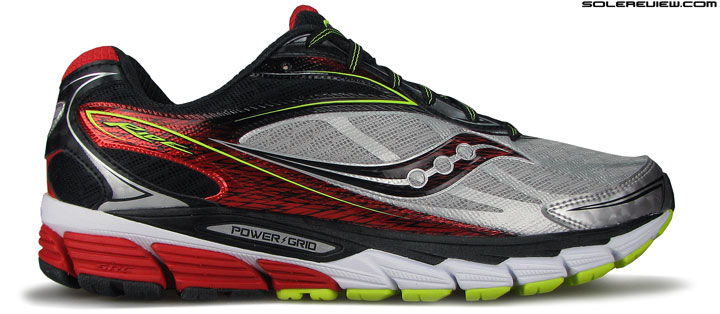
Till the Saucony Ride 9 release in 2016, expect the Ride to feature the (currently) ubiquitous Powergrid foam.
And what of the Saucony Ride? The Ride 8 just dropped this summer, so we’ll have to wait a while before it catches up with rest of the pack. A Everun equipped Ride 9 should release in late summer or Fall 2016, if historical launch cadence is anything to go by.
Hence for the next year or so, it will continue to house the legacy Powergrid foam technology. And what exactly is the Powergrid? It is an independent foam insert topped off over the main midsole, and depending on the shoe, it could be heel only (Kinvara) or full heel-to-toe length, as is the case on the Ride or Guide. By the way, this isn’t to be confused with the Powergrid+ of the existing Triumph ISO and Hurricane. That happens to be entirely different, and while being well cushioned, is somewhat of a marketing vaporware.
By the way, the illustration of the Powergrid component on Saucony’s Ride 8 description page is still incorrect, as it was when we checked last year. The exploded view you see on that page is relevant to the Triumph and Hurricane’s Powergrid+ construction, and does not apply to models which feature the older Powergrid, like the Ride or Guide 8.
Here, we’ll show you how a full length Powergrid foam insert looks like. For this purpose, we sliced open a pair of Guide 7.
The Ride 8 uses a material and midsole stack design very similar to the Guide 7 – except for the firmer medial post of the latter – so this is good a reference as any.
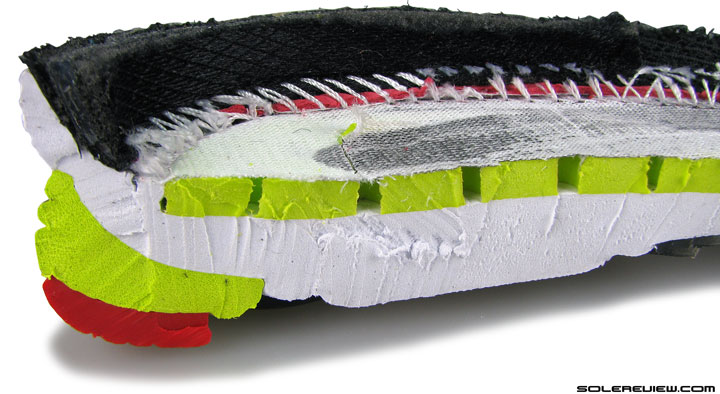
A cross sectional view of the Powergrid foam under the heel area. When seen from the top, it presents itself in a grid shape, thus the name.
See that lime-green topping of foam over the white midsole? That’s the Powergrid foam in its cross sectional glory. The surface is punched all over with squares when viewed from the top, and that is why it is called the Powergrid.
This is softer than the midsole foam it rests on, and thus forms a layer of first cushioning response along with the insole. The Powergrid foam has proved to be a reliable workhorse so far, and served well over several generations of Saucony’s franchise models.
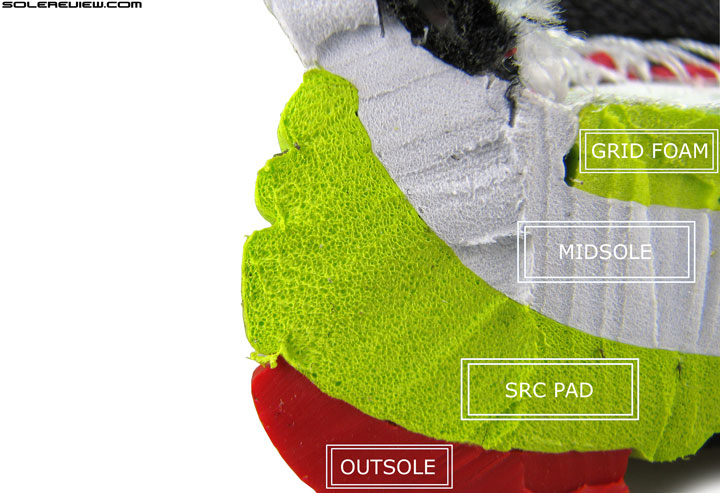
The four main layers of the Guide and Ride. Other than the Grid foam, the SRC crash pad is an area of interest. Lower density than the midsole foam above it, thus providing higher cushioning, relatively speaking.
Last year’s competent Ride 7 had the Powergrid embed, and the Ride 8 follows suit, albeit with a brand new midsole aesthetic. That being the case, the basic design core stays unaltered.
There’s the familiar stacking of white midsole foam and lateral SRC crash pad, all of which is protected underneath with an outsole layout which has a lot in common with the Ride 7.
On the face of it, many things are equal at an overall design level, so what does the Ride 8 do which its predecessor doesn’t? The 2015 Ride 8 does two things differently from a ride perspective, which is as follows.
The heel cushioning is softer than the 2014 edition, and the forefoot also gets a marginal bump in softness. And you’d like to know why, don’t you?
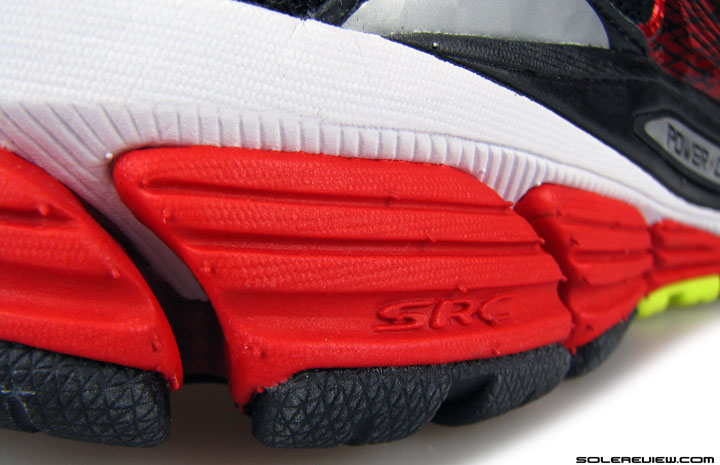
The Ride 8 SRC crash pad isn’t all that different from last year, but goes softer on foam density. Cushioning difference, then? Yes sir.
The SRC crash pad on the Ride 8 is softer than the 2014 component it substitutes, while retaining similar dimensions and placement. And the insole is softer too, a result of more foam below the laminated top fabric.
The insoles look identical, but there are tell tale signs of change. The reverse side has a meshed texture, replacing the earlier perforated design and the edges feel chunkier when squeezed between the thumb and index finger.
This raises the cushioning response closest to the foot, a behavior which spans uniformly from heel to toe. This when supplemented with a softer SRC crash pad, makes the rear-foot underpinnings softer than before.
Under the forefoot, the midsole cushioning levels are the same as before, yet the revised insole provides that extra padded feel, as you have a slightly higher volume of molded foam to rest your feet on.
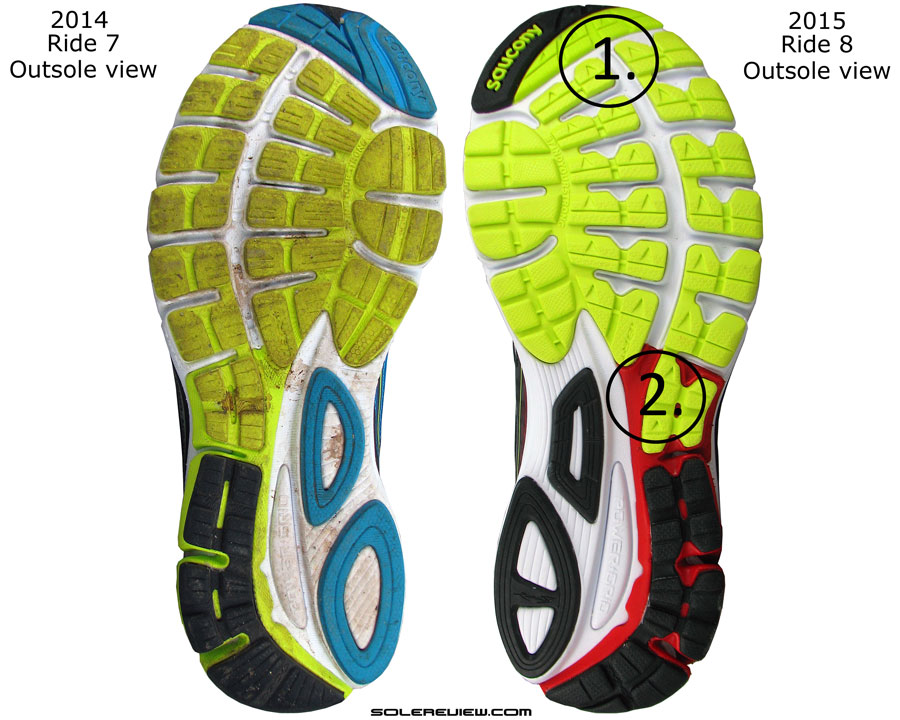
1) The sliver of green below the black toe tip looks like blown rubber, but is not 2) Similar full contact layout to Ride 7 (left)
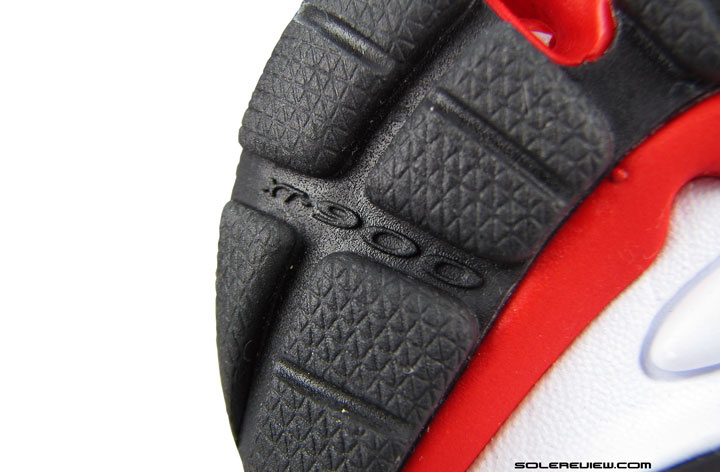
The harder wearing carbon rubber on the heel crash pad, and this part goes from flat (R7) to split lugs on the R8.
Below, the outsole geometry is a near-copy of the Ride 7’s kind; softer blown IBR rubber under the forefoot and the tougher XT 900 under the heel and toe-tip. Minor updates on the lug texture and shape apart, there is only one difference worth pointing out.
The rubber on the heel edge of the SRC crash pad is now split into lugs instead of a flat slab. This has no noticeable impact on the ride behavior, but the individual rubber lugs tends to see faster initial wear when compared to the Ride 7’s flatter design.
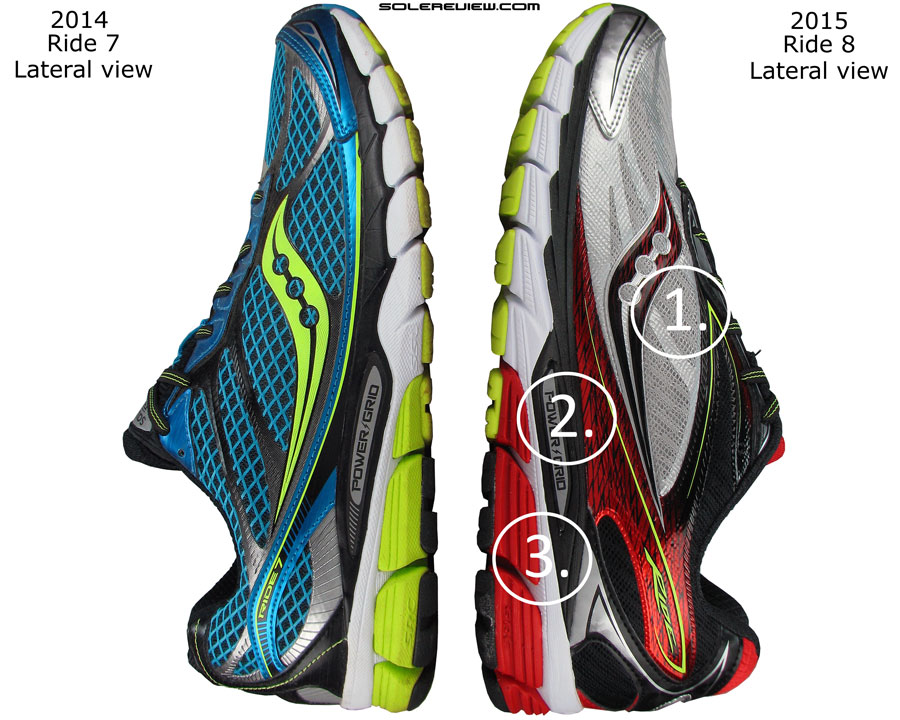
1) Closed mesh, less ventilated 2) Internal Powergrid insert same as before 3) Softer SRC (red) crash pad
On road, you do notice the Ride 8’s relative level-up in heel softness. Mind you, the increase isn’t a lot, so net-net the needle on the ride quality doesn’t move by much. But many are perceptible to even the slightest tweaks on their favorite shoe, and from that perspective, the Ride 8 is different from the shoe it replaces.
Changed in the sense that the Ride 7’s ride was more communicative and feelsome given its firmer midsole. The Ride 8 on the other hand, comes across as a shoe which tends to absorb the bumps on the road better, and ends up being a bit more of a ‘comfort’ shoe than the Ride 7 was.
In our opinion, the Ride 7 also felt a little more responsive than the Ride 8, which comparatively tones down slightly in that aspect. This is a logical cause and effect case; dial up the softness, and see a corresponding decrease in responsive feel.
What hasn’t changed though, are areas such as the transition character and the planted feel of the midsole. It’s a given, if you take into account the near-identical construction, which retains the full contact outsole layout, the flared forefoot design and the supportive heel base, the latter producing a rear-foot strike quality which is neutral without much bias or leaning. We’ll talk more about this when comparing the Nike Pegasus 32 to the Ride 8.
The Saucony Ride 8 (and for that matter, the Ride 7) excels at being a balanced forefoot-rearfoot strike shoe. Regardless of where you choose to land, the Ride delivers with aplomb. Rearfoot strikers will appreciate the SRC crash pad+Powergrid+midsole combo, and forefoot strikers will find much to like in the goings-on in the forward section.
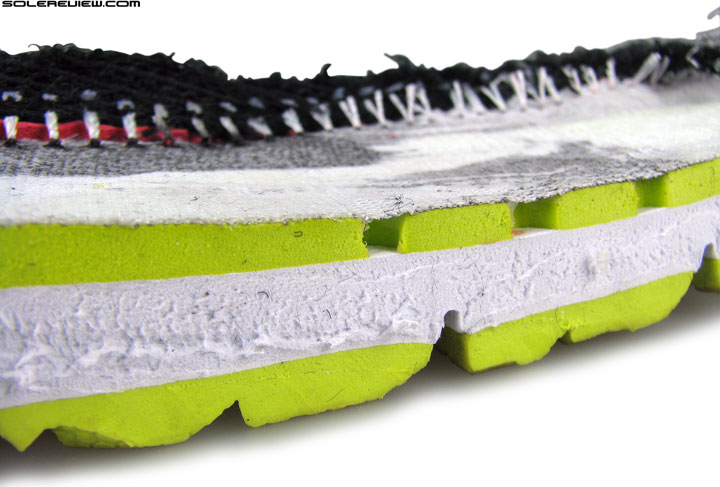
The Powergrid softness extends under the forefoot too, delivering a consistent cushioning feel from rear to front.
The midsole flares out on both sides under the forefoot, thus creating a supportive base for impact and weight loading, and then a liberal spread of blown rubber outsole cushions and grips as it should.
To reiterate, the Powergrid foam extends right up to the midsole tip (see our cross section picture above), so rearfoot strikers aren’t the only recipients of the cushioning benefit.
The marginal rise in softness aside, the Saucony Ride 8 still remains a great shoe to cruise around in, as was the case with its predecessor. It strikes an optimal balance between cushioning and efficiency, meaning that it is comfortable enough to do long runs in, but without any laziness.
Admittedly, it won’t go as fast as one of its firmer midsole equipped cousins, yet performs competently as a sweet spot shoe. The Ride’s midsole/outsole platform is the most balanced we’ve seen on neutral shoes in this category, and the latest 2015 evolution of that franchise does little to change that positive impression.
But the ride quality isn’t the be all, end all of a shoe; what of the new upper?
There’s only one thing you need to know about the new upper, and the rest is just covering all the bases. That happens to be the Ride 8’s forefoot fit, which runs slightly narrower than the Ride 7. But first, let’s get past the ritual of poring over the minutiae.
The Ride 8’s upper silhouette is very similar to the Ride 7, but with a couple of material swaps. The refreshed upper design gets the thin, Flexfilm layers on board, partially replacing the urethane welding in the forefoot and midsection. And then there’s the mesh change.
The Flexfilm used here is similar to the type seen on the Kinvara, with its thin, hot-melt kind of adhesion to the upper.
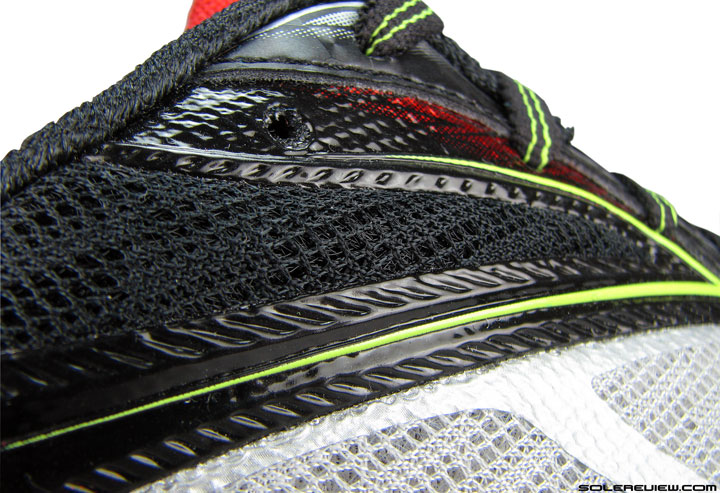
High frequency TPU welding hasn’t been completely done away with; the midfoot and eyestay construction relies on that.
There’s still a lot of urethane welding and stitched-on synthetic leather going on, with the medial (inner) upper making use of stitched-on panels, and the lateral side displacing the earlier synthetic leather layer with a glossy urethane overlay.
Way flashier than the Ride 7, all this.
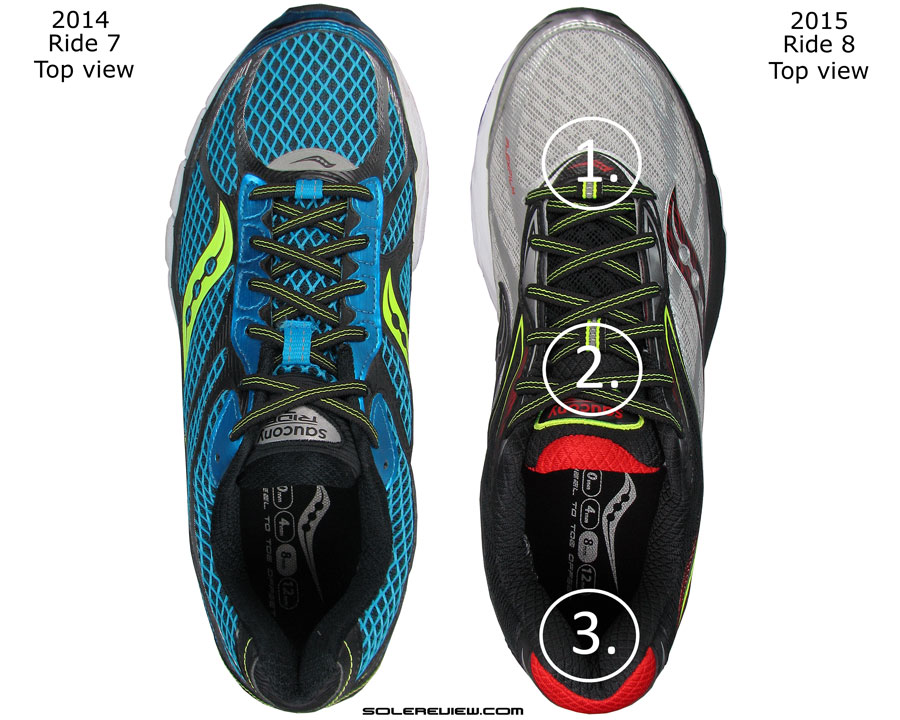
1) Narrower forefoot sides, and the reflective semi-oval is gone 2) Very similar tongue and laces, expect minor slide 3) More infusion of plushness in these parts.
The lacing area and tongue is much like how it was put together in 2014. Flat, semi-elastic laces, quilt-padded tongue with no sleeving, and a matching number of eyelets. And as it went down on the Ride 7, the tongue slides laterally while use. Not by a lot, but it does.
We’ve said this before, and we’ll say this again; tongue slide can be arrested by simply moving the position of lace-loop off-center – towards the lateral side. Brooks has a neat trick in the form of its micro tongue loop, but our suggestion (not an original idea) will get the job done too. adidas has already done this on the adios 2 Boost.
Collar padding and general plushness levels on the Ride 8 has been ramped up. There’s more foam behind the quilted lining, which makes for a greater dose of fluffiness. And yes, the Achilles dip is also softer.
The mesh area on the Ride 8 has a broad, sweeping curve without being stitched over with a layer of synthetic. The picture in which both the Ride 7 & 8 are placed side by side (further below) shows this distinction. This renders the Ride 8 dip more pliable than the 7 – a change which should be appreciated by most.
Functionally, the collar does a great job at keeping the foot cocooned within the plump confines of the Rundry upholstery, and the softer Achilles area is a well thought out update.
If there’s one feature which sees a dramatic scale back, that’s reflectivity, or the amount of materials meant to boost low light visibility. The Ride 7 was in a league of its own; the forefoot was reflective, the lace-loops were too, the tongue top had an insert embroidered in, and the heel had the luminous intensity of a tactical Maglite.
The Ride 8 is an exercise in downsizing reflectivity, so all you’re left with after the snip and tuck are the small lace-loops, the side midsole insert, and a very modestly sized underlay on the heel.
For some this will prove not to be an issue, while others will miss the Ride 7’s well lit upper in low light. Regardless, we’ve called this change out, so you can base your purchase decision on how you see fit.
For a non-sleeved design, the upper fares rather decently in terms of interior fit and feel. The padded tongue is a saviour when it comes to top down pressure while being effective in midfoot lockdown. This is no Nike Pegasus 32; the midfoot isn’t oppressively snug.
Ventilation levels have dropped on the Ride 8, as the newest version substitutes the previous gen Ride’s open mesh with one which has more volume, and importantly, with a relatively closed structure. And it has an impact on the forefoot fit, which is also affected by one other thing.
We started the upper break-out saying that the forefoot was a tad narrower, and here’s where we spend some time discussing the finer aspects of the Ride 8’s inner dwellings.
The way we see it, a couple of factors have a say in the front-end fit. The first one, as we pointed out a moment ago, is the new mesh with greater volume than the Ride 7’s flat profile fabric. That eats into a couple of millimeters of space. The second part of the story has to do with the revised pattern of the toe bumper, in this case made with the silver colored synthetic leather you see below.
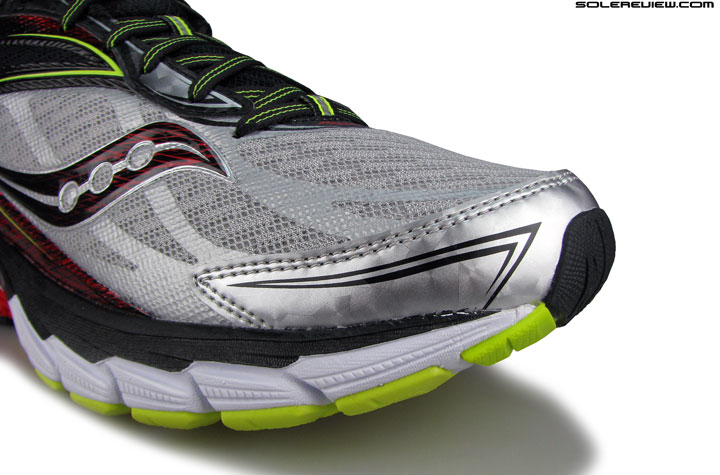
The stitched (pointy) ends of the toe bumper are placed higher than the Ride 7, hemming in the forefoot to a minor extent.
A closer observation of the side by side picture will reveal that the tip(s) of the Ride 8’s bumper are stitched higher than the Ride 7. So from a usage viewpoint, the sides of bumper closes in around the foot at a point higher than before, thus restricting sideways splay – by a small degree.
This is why, the shortening of the forefoot space is concentrated not on the top, or even around the toe tip; both shoes fit true to size. Instead, it is localized over the base of the small toe, and to some extent, adjacent to the base of the big toe.
Here, we’d like to clarify that the decrease in forefoot splay room is marginal, and most of it gets lost while running, ultimately feeling not very different from a Ride 7. The Ride 8 is certainly no Breakthru, a shoe which did have a very narrow upper. And if you’re buying the Ride 8 in the United States, then there’s the optional ‘wide’ available as a fail-safe, just in case you feel you could do with more space.
We assumed that the Flexfilm business would end up reducing weight versus the 2014, but strangely that isn’t the case. In fact, the Ride 8 is heavier than the Ride 7 by around 0.1 Oz/3 gms. Not that it amounts to anything at all, but just stating that the new design does not result in savings on bulk. On its own, the Saucony Ride 8 is one of the lightest shoes in its category, even lighter than the Nike Pegasus 32 by around 10 grams.
In our last review (Pegasus 32), we included a comparison with competing models, and we got a lot of positive feedback. We’ll do the same for the Saucony Ride 8, this being a key shoe in its segment. Not promising this feature for all reviews, however. This additional detail stretches our review completion time from a week to over ten days, and at that rate, we’ll never get any stuff done. No good, that.
After back to back comparative wear-testing, it was easy to distil, and hence sum up the shoe’s character. That the Ride 8’s strength lies in its wide spectrum of all around performance, compared to some of the more focused neutrals out there. Not sure what that means? The comparo(s) below should help with that.
Saucony Ride 8 vs. the Nike Pegasus 32:
If you’ve read our Pegasus 32 review, then this will feel like a re-run of sorts. But hey, not everyone will read all reviews, so here we go again.
The Ride 8 is softer overall, but less responsive than the Pegasus 32. This is due to Nike’s tightly sprung Zoom Air bags, which makes the midsole’s feedback levels (heel only) higher than the Ride. One important thing to note is that the Ride 8 works equally well for forefoot and rearfoot strikers in terms of cushioning, as opposed to Pegasus 32’s heel targeted cushioning.
The Ride 8 is far more supportive. Why so? The forefoot midsole has a flared out design, and the multiple layered heel section provides a stable base. In comparison, the Pegasus 32’s heel feels like it’s missing a chunk laterally due to its deep grooving. This also produces greater bias on the Pegasus, while the Ride feels more neutral.
There’s more toe box room aboard the Ride 8 than Pegasus 32’s shallow tip. That said, forefoot side space is more accommodating on the Pegasus 32. Other minor details would include more reflectivity on the Ride, higher midfoot lockdown on the Pegasus 32, and the plusher heel and grip of the Ride 8.
Outsole durability is higher on the Pegasus, Ride 8’s weight is lower than Nike’s, and the Pegasus is cheaper by $10.
Saucony Ride 8 vs. the adidas Glide 7 Boost:
The Glide 7 Boost is firmer than the Ride 8, but it fares better at feeling more efficient, faster and responsive. Being a polyurethane based compound, it holds its cushioning longer than EVA based foam, the type which Saucony uses on the Ride 8.
Worth highlighting is that both the Ride 8 and Glide 7 Boost work well for multiple footstrike patterns, since the shoes do a good job at spreading the cushioning feel along the length of the shoe.
The Ride 8 might have a flared midsole, but given Glide Boost’s higher levels of firmness, both end up feeling similar from a support angle.
The Glide Boost runs half size smaller when measured against the Ride 8. Once you get past that, the upper forefoot space is the same as the Ride 8, minus the localized pressure. At night, the Ride 8 has better visibility.
The Ride 8 is much lighter (around 15%) than the Glide 7, and cheaper by $10. The Glide 7 has better outsole life vs. the Ride.
Saucony Ride 8 vs. the Ghost 8:
Midsole is firmer on the Ghost 8, and this applies to both the heel and the forefoot areas. This is because of the firmer DNA foam midsole, including the crash pad which happens to be much firmer than that of the Ride 8.
Owing to its firmer base, the Ghost 8 comes across as more supportive in its ride, and decidedly neutral.
There’s greater forefoot splay room on the Ghost 8. However, Brooks uses this thick synthetic leather piece near where the lacing begins, so the whole area feels more built up while flexing the shoe. But view the Ghost 8 through the lens of material specs, and it definitely looks and feels more premium, plusher and higher end than the Ride 8 – for the same price.
The Ghost 8 is way heavier (15%) than the Ride 8, and the outsole durability should be lower in the long run, typical of Brooks. It makes up for it by way of outsole grip, which is better than the Ride and many other models.
Saucony Ride 8 vs. the Asics Gel Cumulus 17:
The Cumulus 17 is heel heavy on cushioning, which means softer than Ride 8’s. That said, the overall cushioning softness is greater on the Cumulus, accounted by Asics’s use of soft foam and lateral side Gel. There’s a relative amount of heel sink on the Cumulus compared to the firmer Ride 8, so take the former’s heel to toe drop measurements with a grain of salt.
Midsole responsiveness is better on the Saucony, and so is the transition quality. In contrast, the Cumulus 17 felt a bit reluctant to dial up speed when asked to. Ride 8 scores higher on support, as it rides firmer – and hence more stable – owing to the nature of its midsole design.
The Cumulus 17 has a tighter forefoot, but plusher collar grip. Asics shoes tend to carry a lot of weight, and the Cumulus 17 is no exception. It packs in 17% more bulk than the Ride 8.
(Disclaimer: For this review, Solereview bought the shoe at full US retail price.)
Looking to upgrade your older Saucony Ride 7 to the latest version, but not sure how the 2015 model compares? We can help here. The following infographic is a ready-reckoner for what changes you might expect in the new model vs. old. To make this more fun, we’ve put in a system of percentage match, which calculates a weighted average for a set of attributes.
A higher or lower match percentage is neither good or bad. The % number just tells you how similar or distanced the new shoe is from the previous version. Total match % is a result of weighted averages.

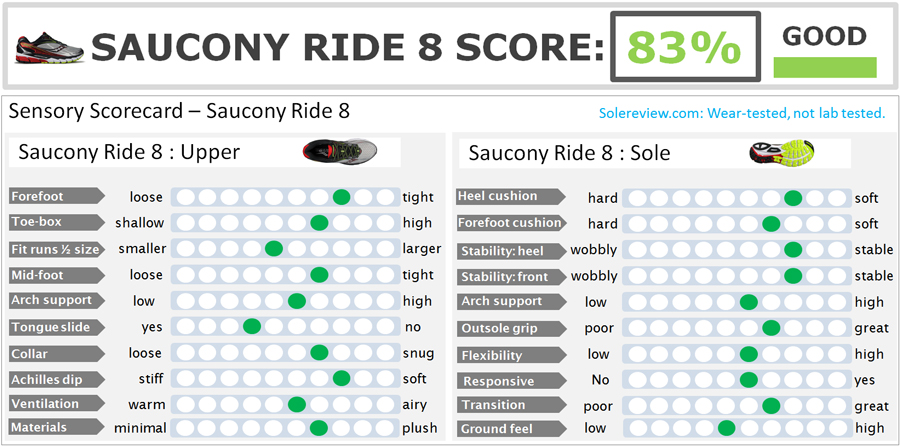
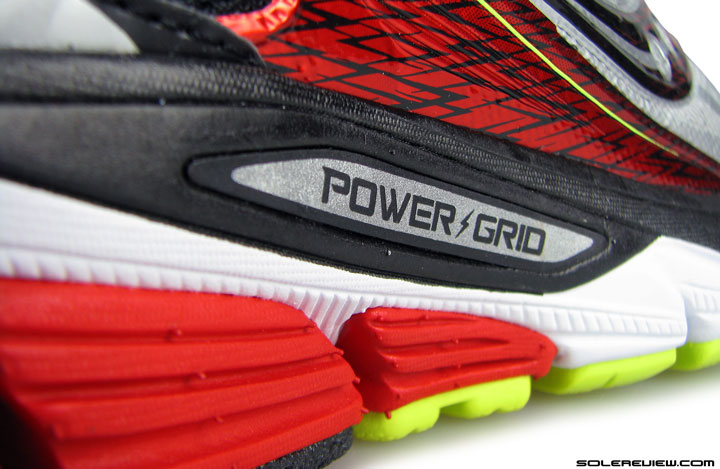
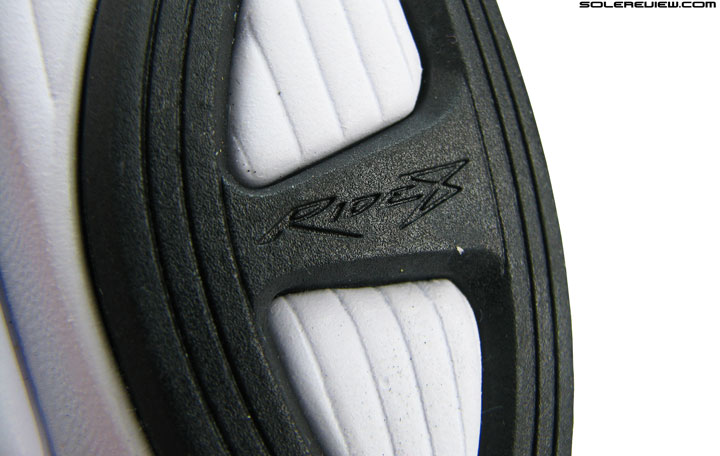
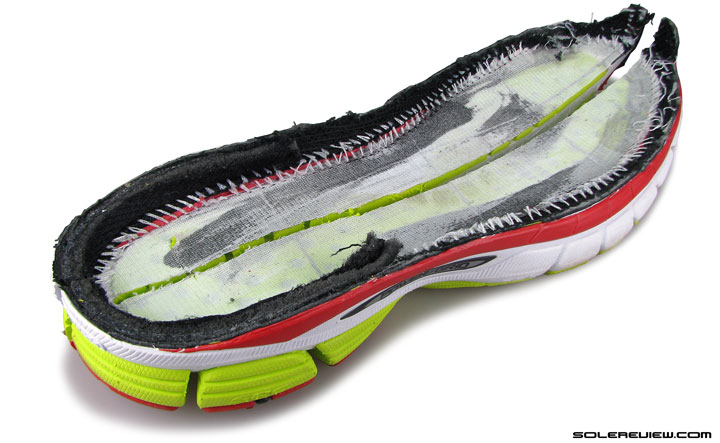
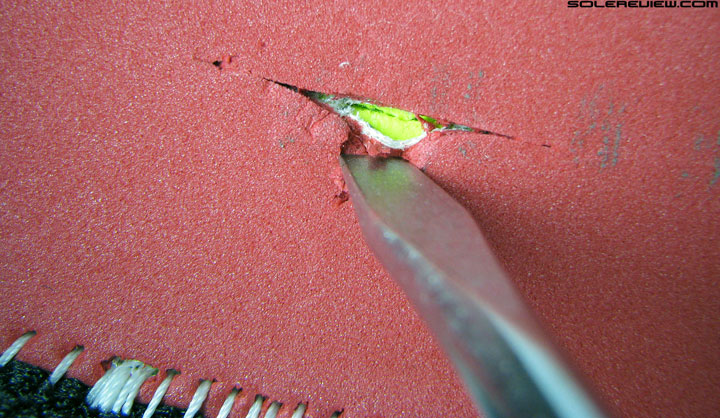
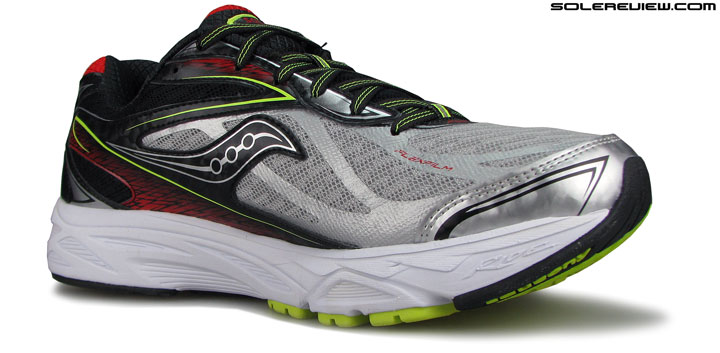
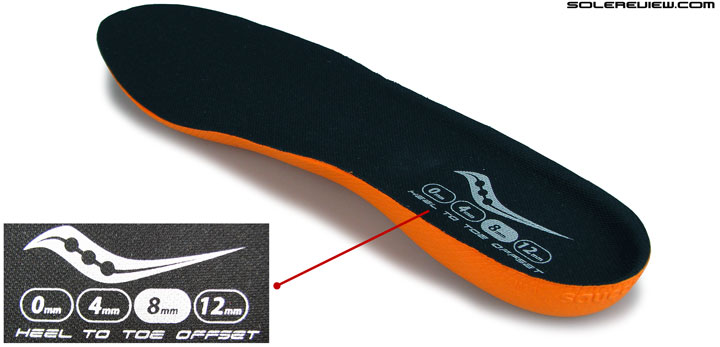
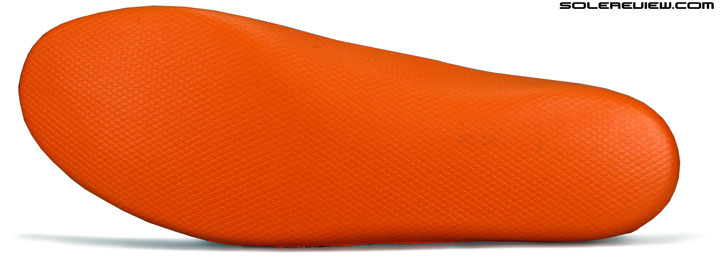
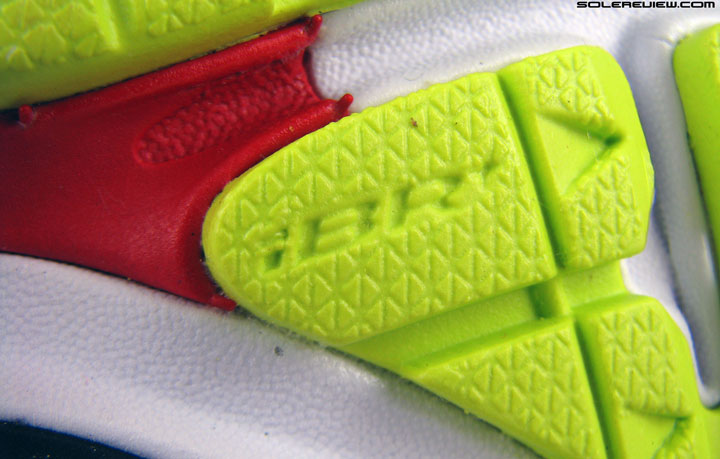
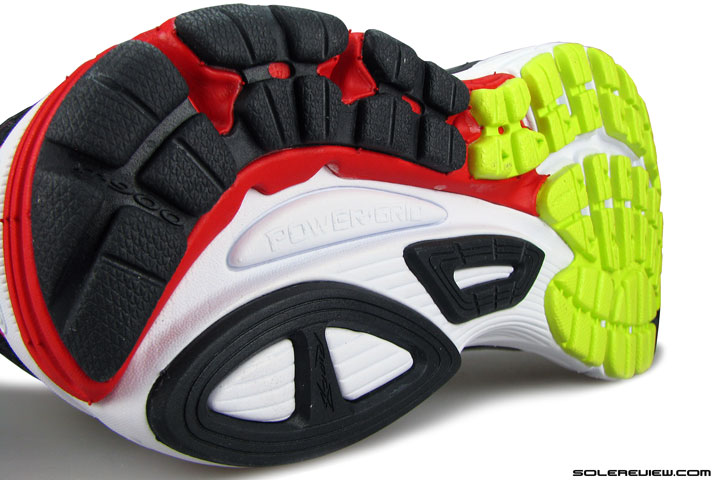
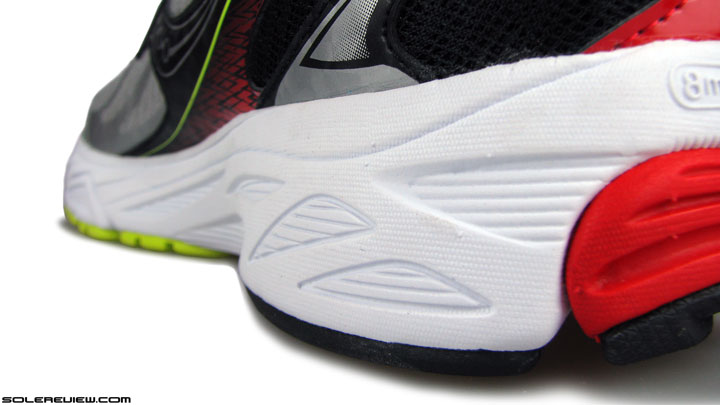
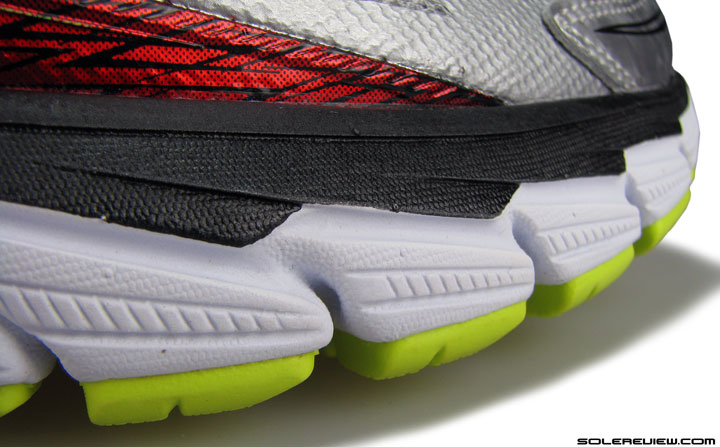
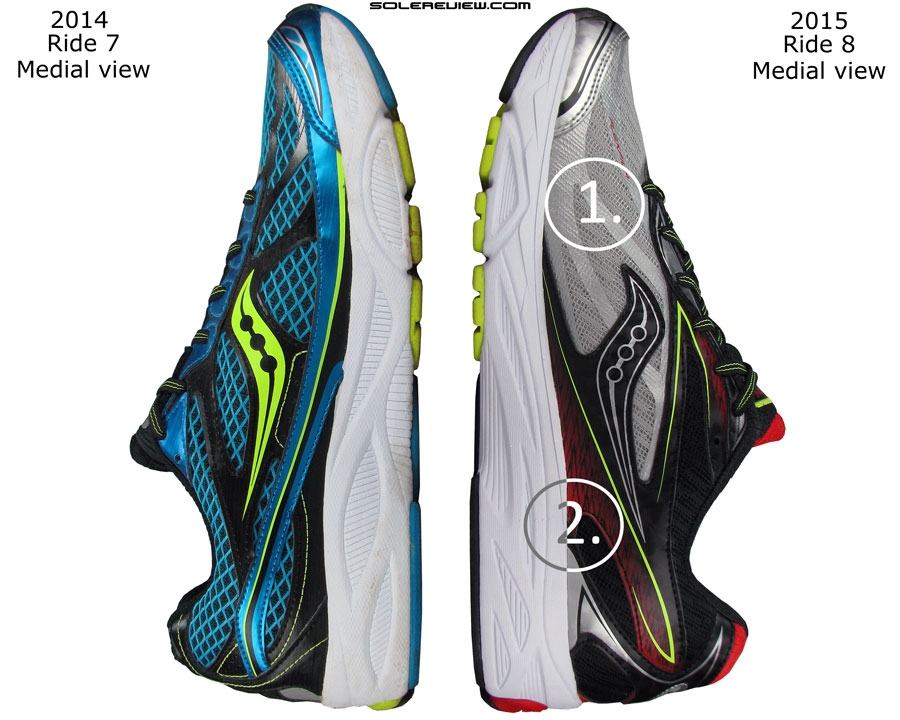
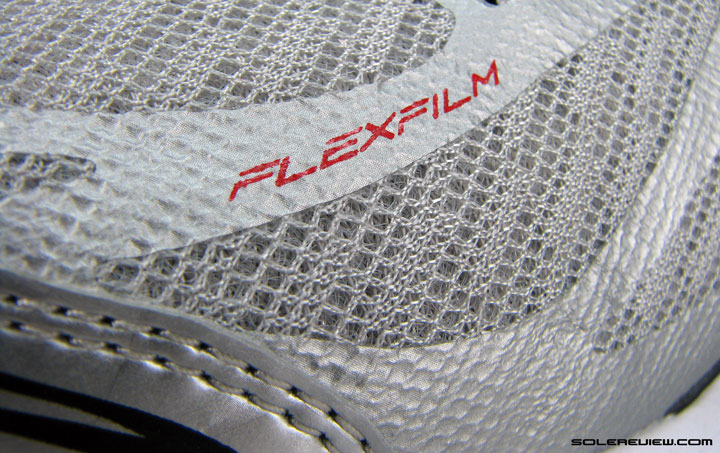
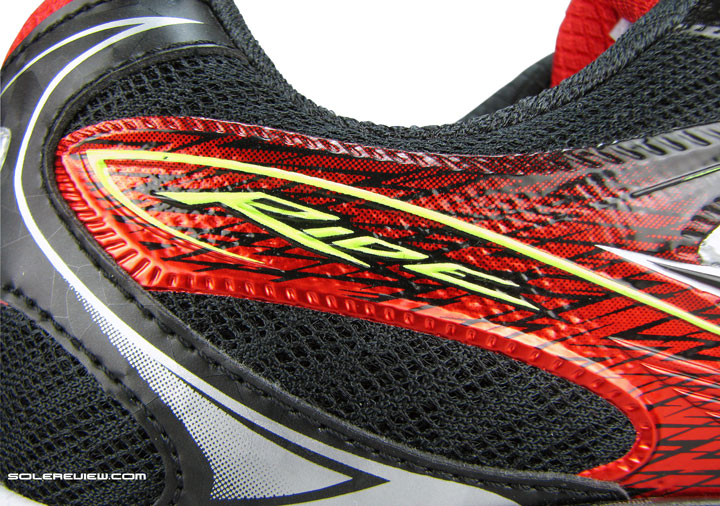
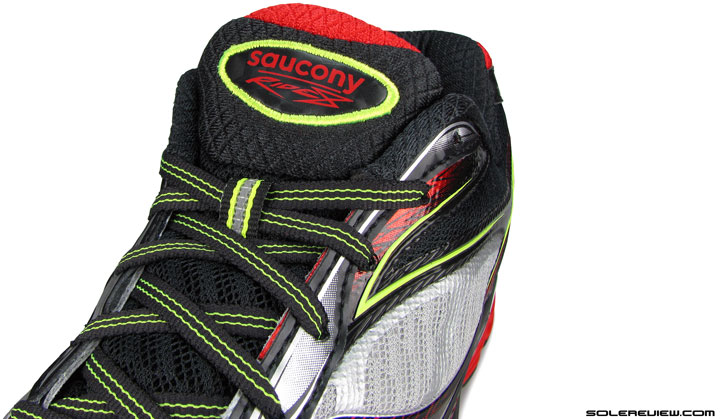
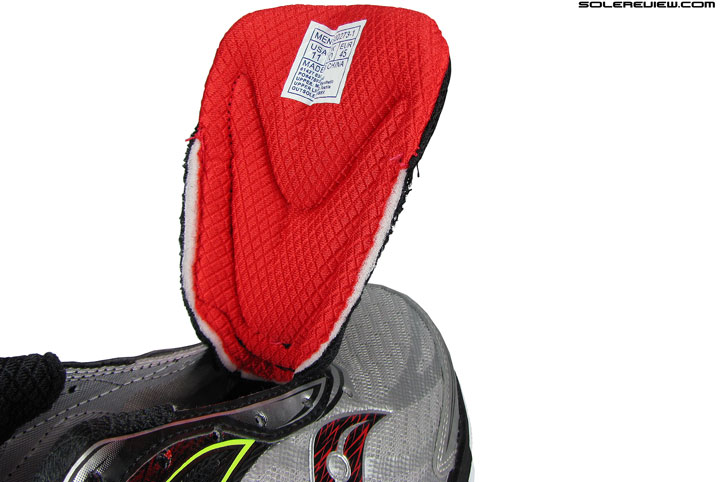
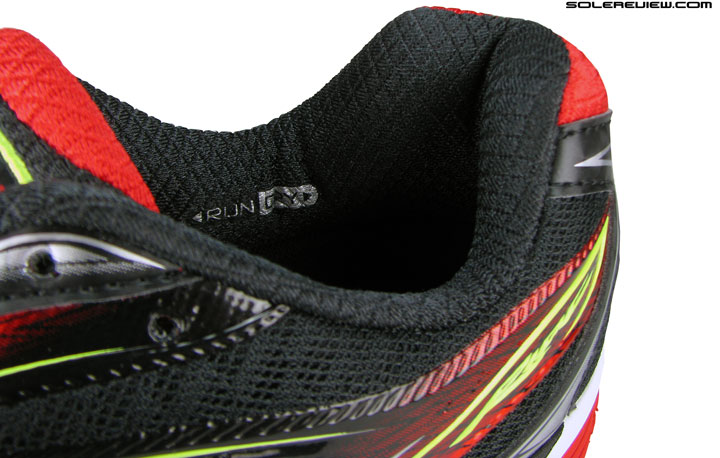
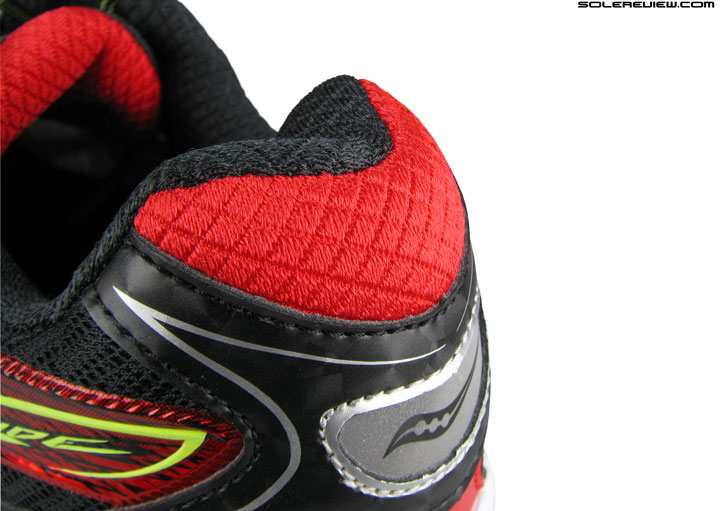
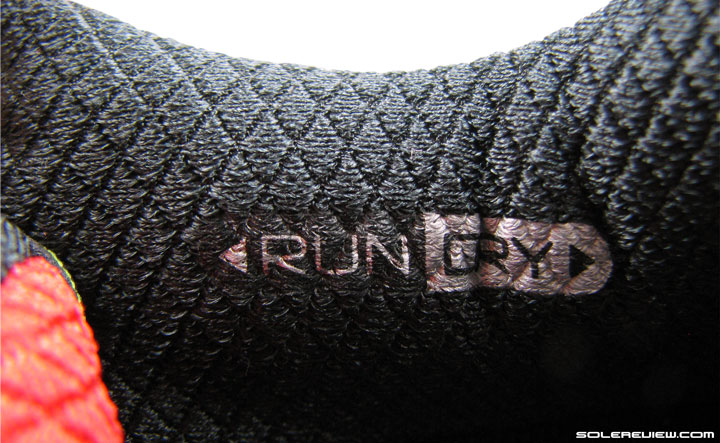
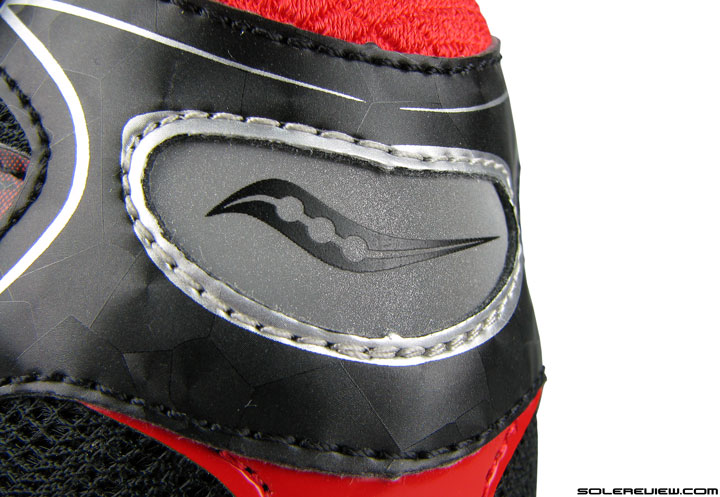
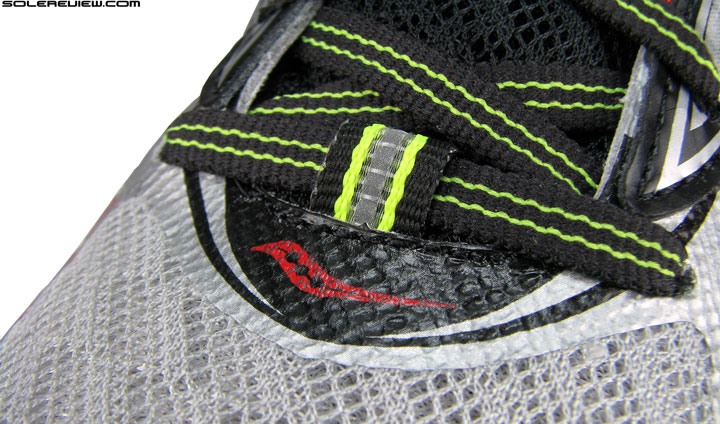
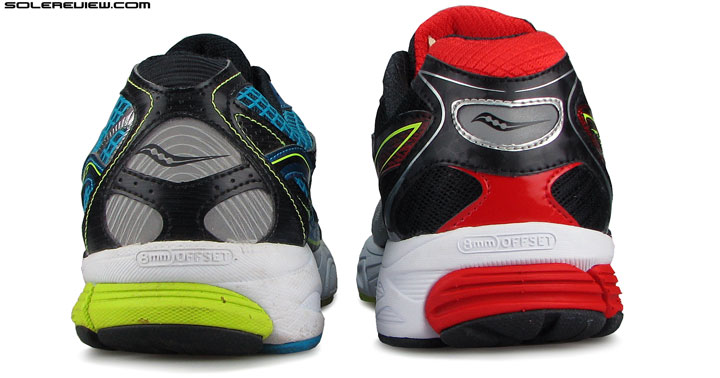
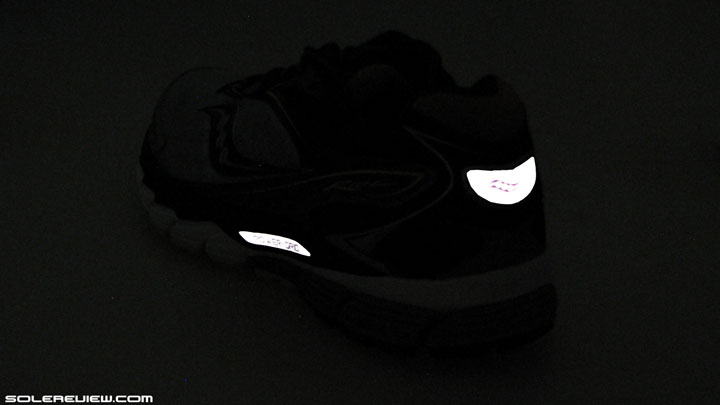
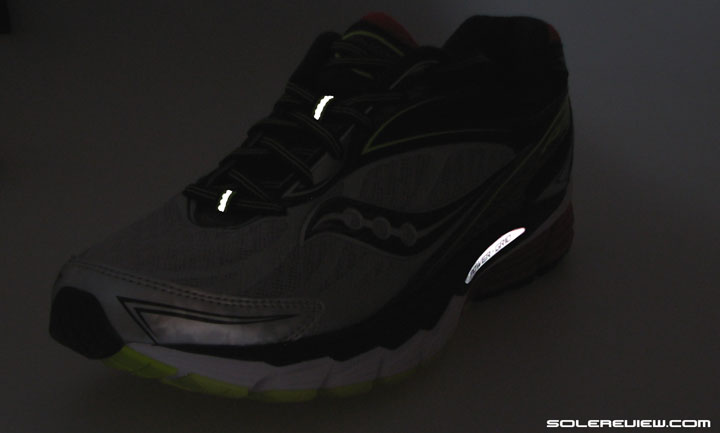
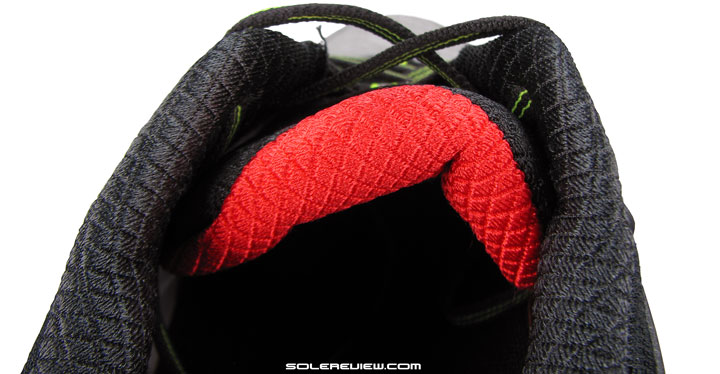
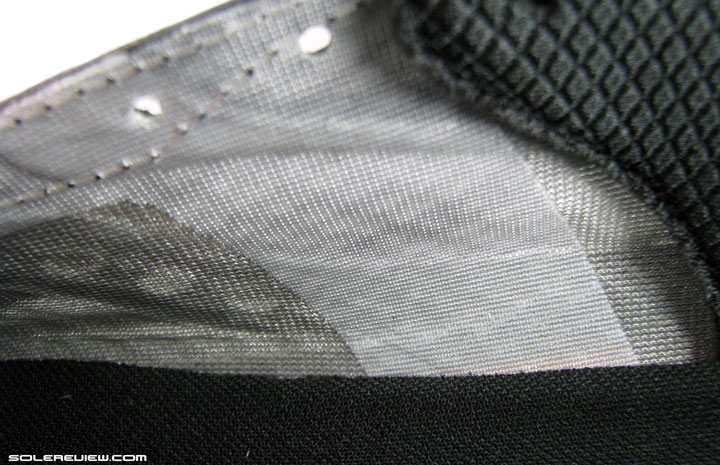
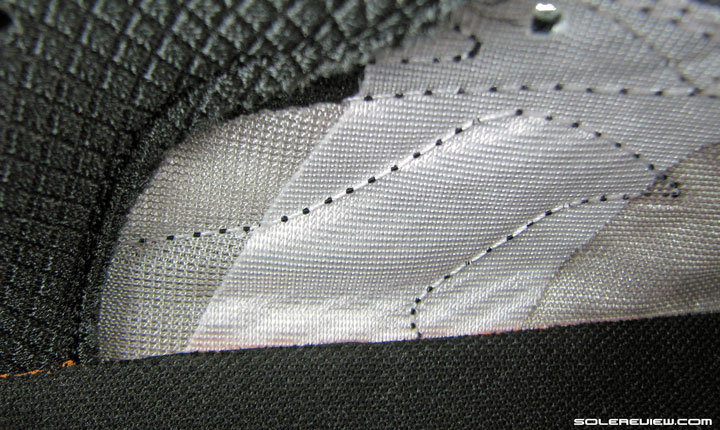
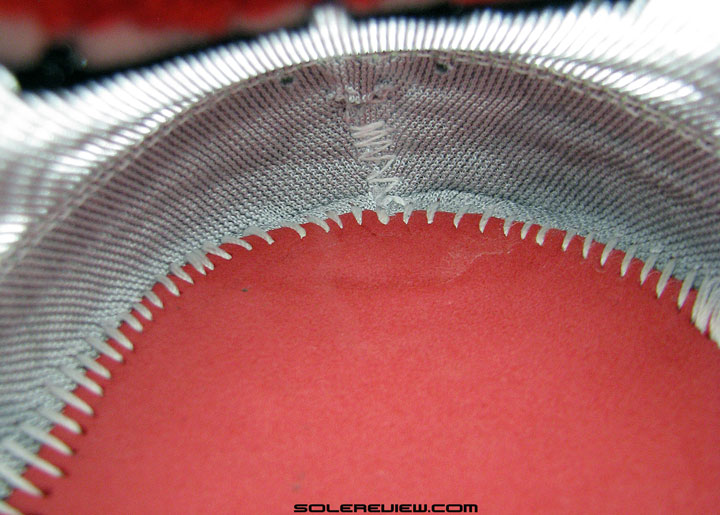
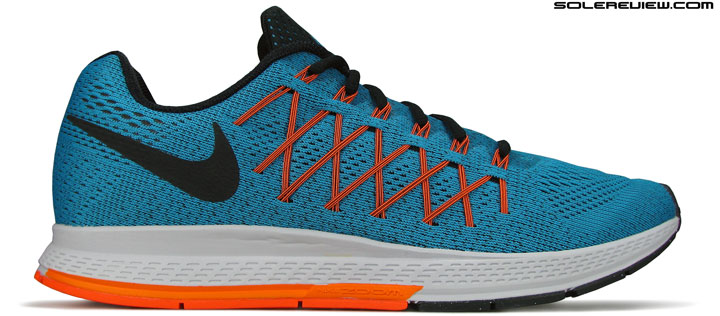
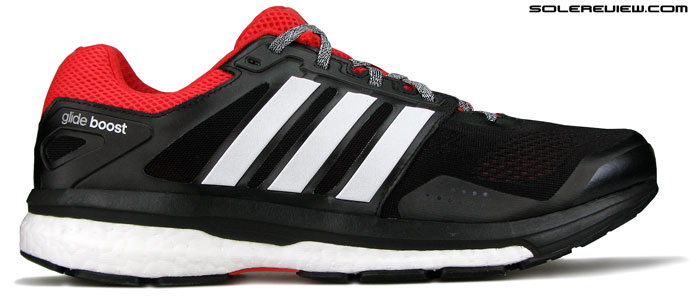
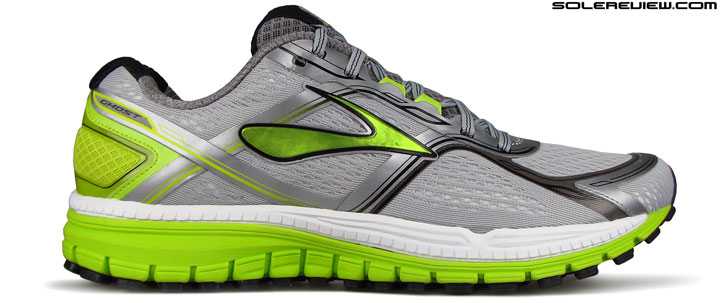
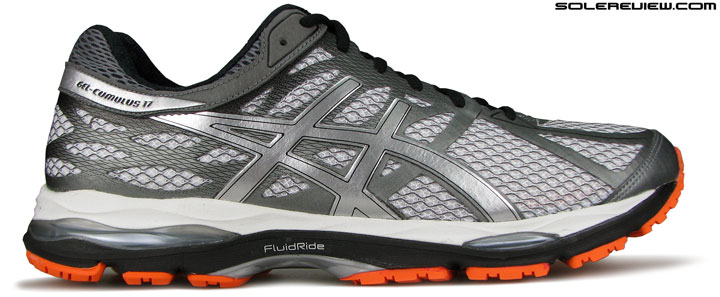
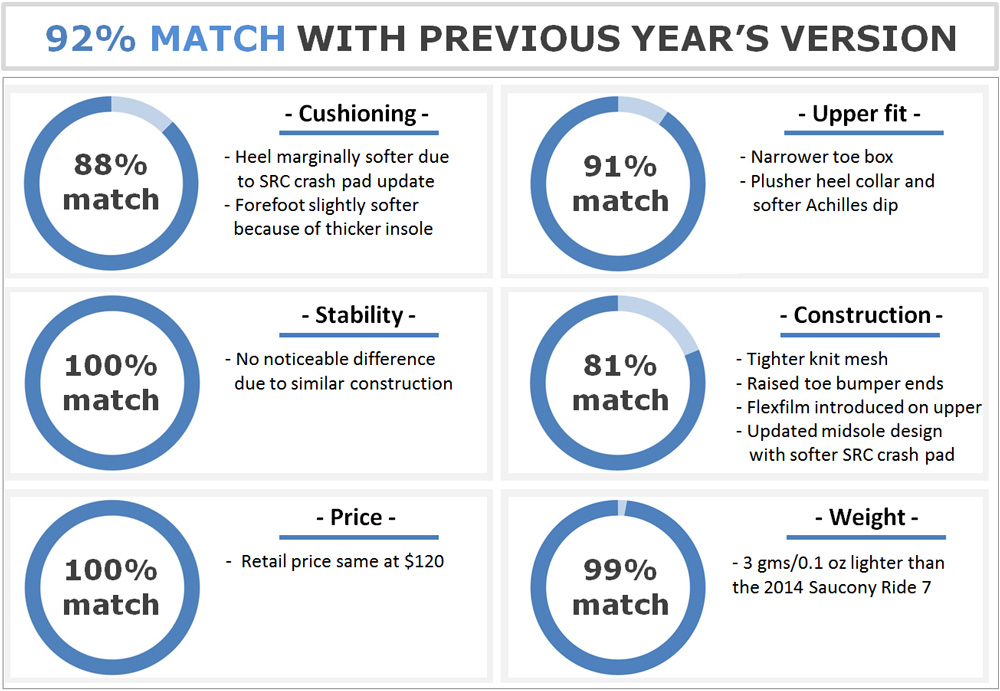
58 comments
Great review! I’ve ran in the Ride 7 and the 8 and I personally liked the 8 better as I felt it was somewhat softer as your review now confirms. I like a softer feel, but I don’t like it so soft that it zaps your energy. I feel the Ride 8 strikes a good balance of soft cushioning and energy return. The Brooks Launch 2 does the same also. And yes, I too, enjoy the shoe comparisons, as they help you to decide between shoes in the same category. Looking forward to see what Saucony’s Everrun cushioning will be like on the Triumph. I’ve been a Triumph user for years and felt the newest ISO was the best yet. Thank you for all the reviews, I enjoy them immensely.
Both are great shoes, it is just that difference in fit and cushioning could swing preferences based on personal tastes.
We kinda missed reviewing the Launch 2, we’ll cover the Brooks Launch 3 instead in Spring.
” the Ride 8’s forefoot fit, which runs slightly narrower than the Ride 7″… (more) bad news for europeans with large feet… :(
Yes, sadly so. But the difference isn’t a great lot, so give the Ride 8 a try at the store and see how they fit.
I’ll do just that, but already had to go up half a number with the Ride 7. I’m currently rotating two pairs of Kinvaras with the Ride 7. Moved away from Asics (Nimbus) and Brooks (Glycerin and Ghost). Happy with Saucony but not easy to find the right fit.. Maybe it’s time to try another brand… Nike? Adidas? P.S thanks again for these great reviews.
I’m curious as to how to feel about the Ride vs the Glycerin, since you’ve run in both. I’m looking for something that has a lot of soft lateral forefoot cushioning.
The Glycerin 11 is the most cushioned shoe I’ve ever runned in. But pure luxury comes with a price: weight (the Glycerin is a really heavy shoe) and some lack of responsiveness. The Ride 7 is a faster and lighter shoe, but still providing enough comfort for a longer run. So although I consider the Glycerin a good shoe, my preference goes to the Ride 7.
Much appreciated.
Nike’s are getting back into the game, so worth a try. The Vomero has a wide forefoot, for example, with supportive yet responsive cushioning.
I picked up the Ride 8, since they felt great in the store. About 30 miles in, I had blisters on my middle toes of each foot. When trying on the shoe in the store, the big toe felt fine, and the toebox did not feel squished, but once I got blisters, I started to pay attention to the fit and could feel a slight rubbing of my second and third toes, especially when running any sort of hills. I’ve used the last lacing row to lock in the heel, which helps a bit but does not correct the problem. I like the overall feel of the Ride 8, and am disappointed that I will be taking them back (my retail store has a 90 day return policy). Do you think this would be solved by up-sizing by a half size, or going to a wider shoe width? I’ve never gone with a non-standard width before, so I hesitate to do so now. Or should I jump to a different shoe/brand? I like the wide and stable sole on the ride, as well as the multiple footstrike compatibility. I’m also running in a pair of Vomero 10s and a pair of LunarTempos (half size up) for faster days. I’m intrigued by the Boost foam, and from this review, specifically the Glide Boost 7. Hopefully the next Triumph with Everun will have a better fit in the toebox.
Are the toes being rubbed right around the tips, or are the blisters under/between the toes? If it is ahead and around the tips, a half size up might help. Else, it is hard to say.
If you liked the Ride 8, then chances are you will appreciate the Glide 7 Boost too. Hard to say on the sizing subject (your toe fitting) except that adidas tends to run slightly smaller and usually people buy half a size larger over American brands.
The toes are rubbed right on the tips, one of the reasons I thought going a half size up might work, so I think I will give that a try first.
Thanks for the response, and all the detailed work on the reviews. I am relatively new to the site and love the wealth of information and analysis, especially digging into the materials used in the midsole and relative fits of the shoes.
Sorry for the delayed response, but did you give a half-size up option a try yet? Curious to know whether that took care of your issue.
I tried the half size up in the Ride, and the toes didn’t feel like they would run in the same way. But since I have also been running in the Vomero 10, I decided that I prefer the wider forefoot to allow for more splay. Also, although I initially didn’t care for flywire and the feeling of a more local pressure, I have come to appreciate the way that it locks in the midfoot, while remaining light and airy. Between the Vomeros and LunarTempos, the Rides didn’t seem like they would have a big spot in my rotation.
Appreciate the feedback, very helpful.
Another incredible review- thank you! Have to say disappointed with the Ride 8 after the glowing review the Ride 7 received. I tried on a pair of the Ride 7’s at the store a while back and I must say they felt super comfortable.
The Ride 7 is our personal choice, too.
Thanks for the amazing rewiev! My ride7 are old enough and I want to change them. I was looking for something a little bit faster, maybe with a little less cushion. Can you give me some help? Need a shoe for everyday training and marathon (3h 15 is my PR). I thought breakthru was the right choice, but i have a quite wide forefoot so maybe they’re not the best shoe. Thanks for helping me.
How about the Nike LunarTempo, then?
I’ll try them at my store! Thanks!
Hello, this is a GREAT site. I really enjoy reading the reviews and learning such detailed information. It is clear that you have shoe industry experience. I have a general question, and I apologize that I am posting it here, but I did not find a “general” section: Is there an explanation key for the rating matrix at the top of the reviews? I am interested in knowing what the difference between “transition” and “responsiveness” is, and how those factors are evaluated. I realize these may be subjective, but I don’t understand what the difference actually is… Both sound like good characteristics though!
Hello Peter, thank you for the question – very valid one. We don’t a do a great job at explaining some parts of our ratings – as soon as we find time, we’ll put up a detailed guide.
We have an evaluation sheet for the overall % score, but not for individual characteristics. Here is how we do it:
https://www.solereview.com/mizuno-wave-inspire-11-review/#comment-1800786881
This was nearly a year ago, so the template has since evolved to address other qualities.
Transition simply means the behavior of the shoe as your load the body weight from heel to toe, or toe to heel, depending on footstrike. A shoe which scores higher will feel snappy, meaning no perceived loss of energy/efficiency during this process.
As general examples, a super soft shoe will score lower on this scale as the mushy midsole slows down the transition, or the weight loading process along the length of a shoe. A firmer shoe will do the opposite.
Responsivness is the midsole design’s ability to provide a ‘springback’ of sorts, instead of just sinking in, or providing no feedback at all. A Nike Zoom Air bag feels more responsive than adidas’s Boost foam, which in turn feels more responsive than Saucony’s grid or equivalent. Just think of different coiled springs; a tighter spring is more responsive, and a softer one is just that – soft, and lower in responsiveness.
Hope this makes sense.
Hello, great review, keep up the good work! Could you give me advice if these shoe would be right for me (or which other shoe would you recommend)? I am 190 cm, 85 kg, slight supinator. I owned Brooks Pureflow (1) and they were great, but I can not get them anymore. I tried 3rd edition of Pureflow, but I don’t like them so much (slower, my heel occasionaly hurts – I think I have plantar fasciitis). I also tried Saucony Kinvara 3, which were very fast, but not enough custioned (plantar fascitiis gets worse in them). Do you think my heel problem demands heavy (slow) stability shoes or can I have fast shoe that will protect my heel? Which one would you suggest?
Hello Mersault,
Have you been to a physiotherapist/Podriatrist to diagnose your pain? Professional medical advice should help you narrow down your shoe choices.
If you liked the Pureflow 1, then you should try the Nike LunarTempo, New Balance 1500 V1 and the NB Fresh Foam Zante. Heavier shoes could be an overkill if you’re transitioning up from the Puewflow, but like we said, expert medical opinion could shed more insights into your pain.
Research has suggested a stability shoe to help with plantar fasciitis, however, the reality is that people who switch to stability shoes are normally worse off because of the firmer arch region. Stay in a plush neutral or no more than a half-posting shoe. If you like the pureFlow, I suggest the pureCadence. It’s incredible even if you don’t really overpronate. You might try the Saucony Cortana, Saucony Zealot, or Asics 33-FA if you like the plush, 4mm drop shoes.
I run about 70-80 miles/week and have tried a lot of shoes. Hope this helps!
Hello, I ran only two times in those shoes, supposedly neutrals, and I really ddn’t like the bias that goes through the entire heel. Adidas does the same thing on some shoes, at the rear end of the heel, but the rest of the sole is even. I’m a midfoot striker, and when I buy neutral shoes, I expect to land on an even surface, not having my gait distorted in any way. I’ll give them another try, may be I’ll get used to it, but my first impression is negative. I didn’t buy the guide, i’m the guide, and I like my ride to be neutral.
Just read your latest comment above! Glad to hear it turned out well :)
Oups, I was talking about the Ride 7 gtx. I got used to them by landing more on the forefoot, the cushioning is great, it’s bonna be allright.
Happy to know, thanks for the update!
While the heel did seem plush, I find myself having unusual amount of heel slips (I have worn the shoe for a week now, though they may take a bit more to just break in) on the Ride 8 as compared to the Ride 7s. I’ve tried to rectified it and so far the only method is really to tie the upper foot tight. Did you all have the same experience?
Eitherway it feels as good as a Ride 7s and I agree with your review no more. :) Good job! First source to look for reviews on when to purchase running shoes.
Appreciate the feedback! While we did not experience any heel slips, it could be due to the softer Achilles dip and collar lining – something we’ve pointed out in our review.
There is no difference in actual back height/depth, however.
It’s sad to see Saucony’s power grid foam go by the wayside just like Brook’s DNA gel inserts did. I’ve enjoyed running with the power grid foam very much the past few years. Haven’t liked the power grid plus as well. Just recently got the new Triumph ISO 2 with Everrun and I have to say the I dislike it extremely. It seems quite firm with little compression. It may be somewhat responsive, but to me it’s not very enjoyable the run in. I have the Ride 8 and like the softness, but am looking for another shoe also. Any ideas on a shoe that’s soft, but not so soft that you sink to the bottom of the cushioning like in the Nimbus 17? Thanks
We’re curious to find out how the Everun cushioning system rides. Maybe next month. Have you tried the Vomero 10?
I haven’t tried the Vomero 10. I may go give those a try. Thank you.
Where can you find replacement insole for the Guide 7? I had big issue with all of my shoes where the insole part is ripped.
Not sure. Why not write to Saucony and see if you get them. The Guide 8 uses the same insole too.
Have worn Ride long time. Normally last 400 plus miles. Ride 7 left shoe heel broke down at 200 miles. Feel likes my heel is in a whole. Heard anything like this. 150pd 5’8″ started Jazz 1980
That’s not very common, Steven – we haven’t heard or seen anything like that. Has the outsole come off the midsole?
No. Just seems to have lost it firmness. The 6’s seemed to have better support in the heal. I know they changed the sole between 6-7. I have tried the Ghost 6 but seems to push to hard on the arch. Feels like it is dog tracking. Front of foot going one way and heal trying to go another. Seems funny.
Strange. Shouldn’t have happened at 200 miles. Have you tried the adidas Glide 7 Boost?
Hi there! Love the reviews. I recently switched from the Kinvara 4’s to the Ride 8’s.. but I’m not sure if I should have perhaps went with something like the Guide 8’s or the Omni 14’s which they describe as more of a ‘stability’ shoe. I’ve been working on my stride and getting to that more “natural” form, with a forefoot strike, so I decided to stick with a neutral shoe. I increased to an 8mm drop, just because I think I went to quickly to the 4mm and am still guilty of a slight heel strike.
I was curious about the score chart at the top with the dots. I’m not sure if I’m reading it right, but it would seem like, in comparison of the Ride 8 ‘Neutral’ vs the Guide 8 ‘Stability’, that the Ride 8 according to that graph is just as stable as the Guide 8? I tend to get some slight above the ankle inside leg pain, which i’m hoping is not Post Tib syndrome and I’ve been working on my strengthening. I’m just not sure if switching to a ‘stability’ shoe would be more backwards if anything……..
…..I’m lost! There’s so much different opinions and information it’s hard to digest and I’m honestly not sure if I’m understanding all the terminology correctly. Anyway.. Thanks a bunch.
Since shoes react in different ways depending on each runners, there isn’t an universal rule to follow. Also, things like heel drop and shoe category are to be taken with a grain of salt.
The best way to buy the right running shoe goes somewhat like this:
If there was a shoe you liked running in, try to find a similar shoe (ride and fit). With that as a base, get a sense of features you’d like to see improved on your older shoe, and seek out a new shoe which those improvements.
Happy New Year! A big thank you for my two fav shoes I’m currently running in. Ride 8 & NB1400v1. Thanks for reviews and advise previously.
Purchased a pair of ON Cloudsurfer’s. Which I’ve renamed dustcatchers as I’m just not feeling the love. Just feel weird.
But I digress. Onto my question. I use the NBs for speed work, 5k – 10k, and races up to HM and the Rides for longer runs 15k +. I’m looking for a shoe to add in for longer tempo runs 10k-20k which can offer cushioning but also pace. Do you have any thoughts.
Apologies if this is a bit of a niche request.
Warmest,
Victor
Victor, thank you for the wishes. Have a great new year too!
You should consider the Nike Lunaracer 3 or the LunarTempo. Very lightweight, and enough cushioning for 10-20k distances. We’d pick the Lunaracer 3.
Thanks for the super quick response.
Tried the LunarTempo’s on this morning. As my local shop don’t stock the Lunaracer.
Do these fit the same as I may need to buy the Lunaracer’s online.
Cheers
Our LunarTempo review has a section on comparison versus the LR3 :)
The comments thread will be closed till January 17, 2016. Any inconvenience is regretted. Premium members can continue to use their dedicated comment section, which will be open.
Hi really helpful reviews. My question: I am 5ft 7 or about 1.70m and weigh about 68kilos. Have run my first marathon in 3 hours 15 and all went well in a pair of NB 880v4 which now need replacing. Since marathon have suffered with achilles problems and a pain on the ball of my foot. I have v. high arches, heel strike and a touch of under pronation. Have been considering Ride 8 or maybe pegasus 32 as a new trainer for both training and running marathons. Would like a good heel/toe drop and arch support. To be honest also want something that will help me improve my times so not really looking at Cumulus or Nimbus. Any advice would be gratefully received. Many thanks. Richard
Not sure whether a different shoe will alleviate your minor injuries, but we’d choose the Ride 8 over the Pegasus 32. It has more cushioning in the front than the Pegasus. and a slightly lower heel drop, which is some cases works better for the Achilles.
Also suggest the adidas Supernova Glide Boost. Good mix of cushioning and fast feel.
Very many thanks for the quick response – I am hoping that a slightly more cushioned shoe may help! I’ve got to be honest I never really got on very well with the 880v4 – for some reason the fit seemed slightly too long and not enough support. I had not even considered the Supernova Glide Boost – looks interesting any problems with weight for a small bloke?
The great thing about the Glide Boost that isn’t overly soft, nor noticeably skewed in favor of heel or forefoot cushioning. The firm ride bodes well for speed, and the uniform midsole materials makes for great transitions.
We love the Ride too, but the Glide Boost is a durability monster, both from a midsole foam and outsole rubber perspective.
Just watch out for the sizing, you’ll probably have to go half size up on the Glide. Give them a fitting trial to be sure.
Many thanks will definitely give them a go – other options are the Ghost 8 wondered what your views are on how they would compare.
Got to be honest have now tried the pegasus 32 and although feels nice in the shop have serious concerns over its durability as a long distance training shoe! Would like to try the Ride 8 but quite hard to find a non on line retailer in France as I have quite a small (UK 7) but wide foot and have heard that Saucony have quite a narrow fit!
Many thanks again for the input – really useful.
The Ghost 8 is a great shoe, but feels a bit clunky when trying to run fast. The Pegasus 32 is very durable – perhaps only second to the adidas Glide Boost.
The Ride 8 fits nearly the same as the Glide Boost. The Pegasus 32’s forefoot fits narrower, and the toe bumper is shallower.
As ever many thanks for the input.
Hi, I have been running in the ride 7s for the past 8 mths or so and have just switched to the ride 8s. I have ran in them 3 times so far and only done 3 miles each time. So far I’m hating them. I get a horrible burning sensation just above my ankle on the outside, my shins feel tired/sore and I just feel like I can’t run in them, they also feel like they are slipping slightly at the heel even though I’ve tied them tight enough. I just presumed that they would be fine as I’d ran in the ride7s. I bought them online to try and save some pennies so can’t return them. I ran in my very old brooks revennas last week and managed 10 miles no problem but could only manage 3 miles yesterday and I was very slow. Do you have any idea what’s going on? I now need to find an alternative fast as I have a half marathon in 5 weeks
Sorry, but it’s hard to say what might be the exact problem regarding your soreness. A visit to the physio/podiatrist for professional opinion is the safest recourse.
I also bought the Ride 8 online because of a great sale and after running in them once I immediately went online again and found another pair of Ride 7s. I hate the new version. It is definitely too narrow at the front of the foot (weirdly enough this also happened when I tried the new Gel Nimbus 17… Loved the 15 version, skipped 16, tried 17 and had to return it). I feel like when the shoe gets the flex film it seems to get more narrow in the front of the shoe…. Just my two cents. I loved your thorough review!!!
We felt the same too – the Ride 8 is narrower than the 7!
Comments are closed.